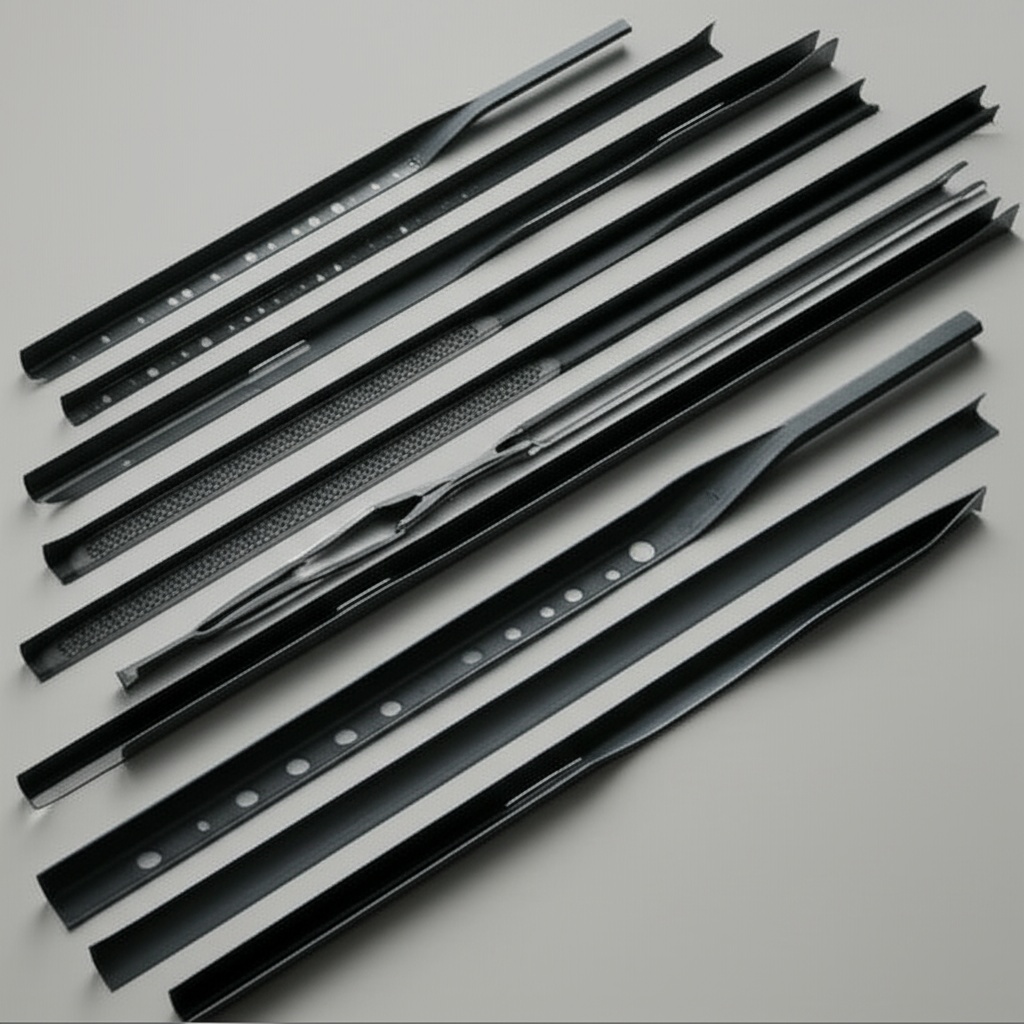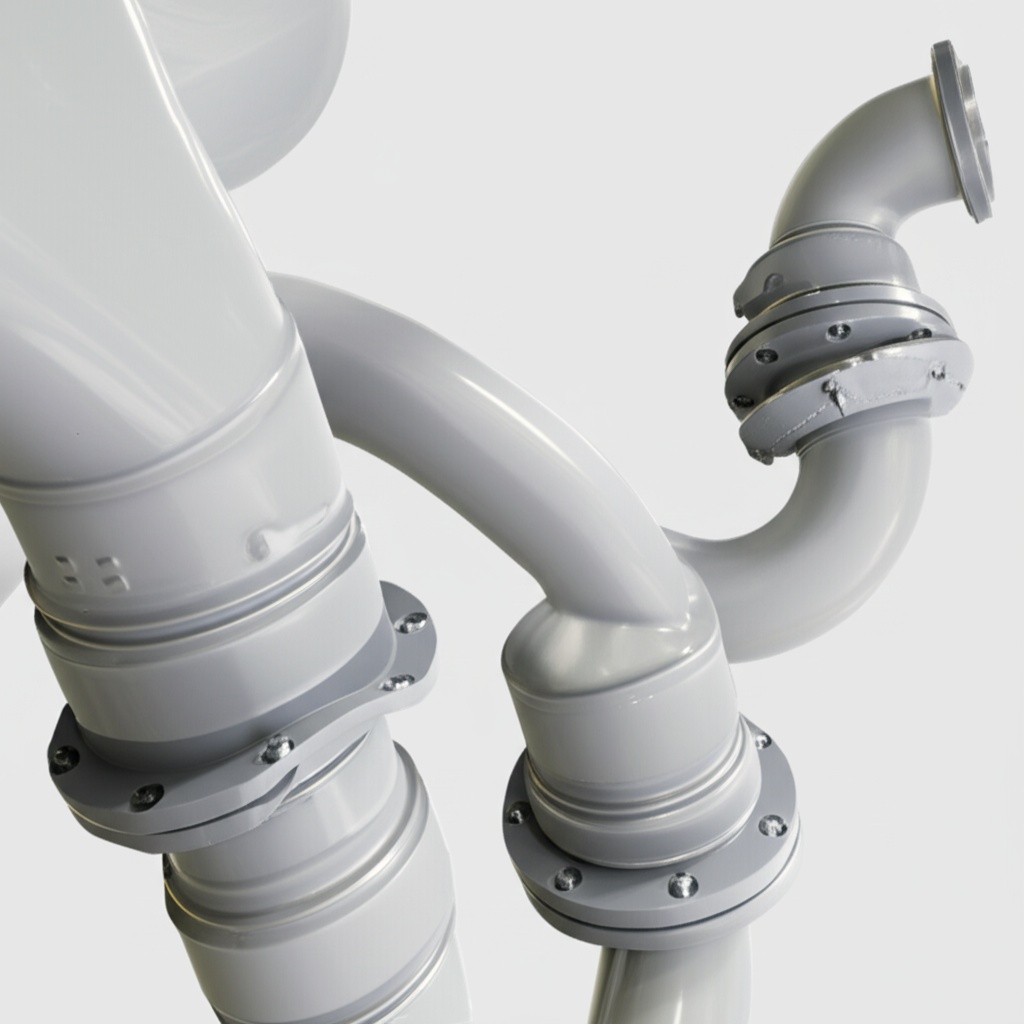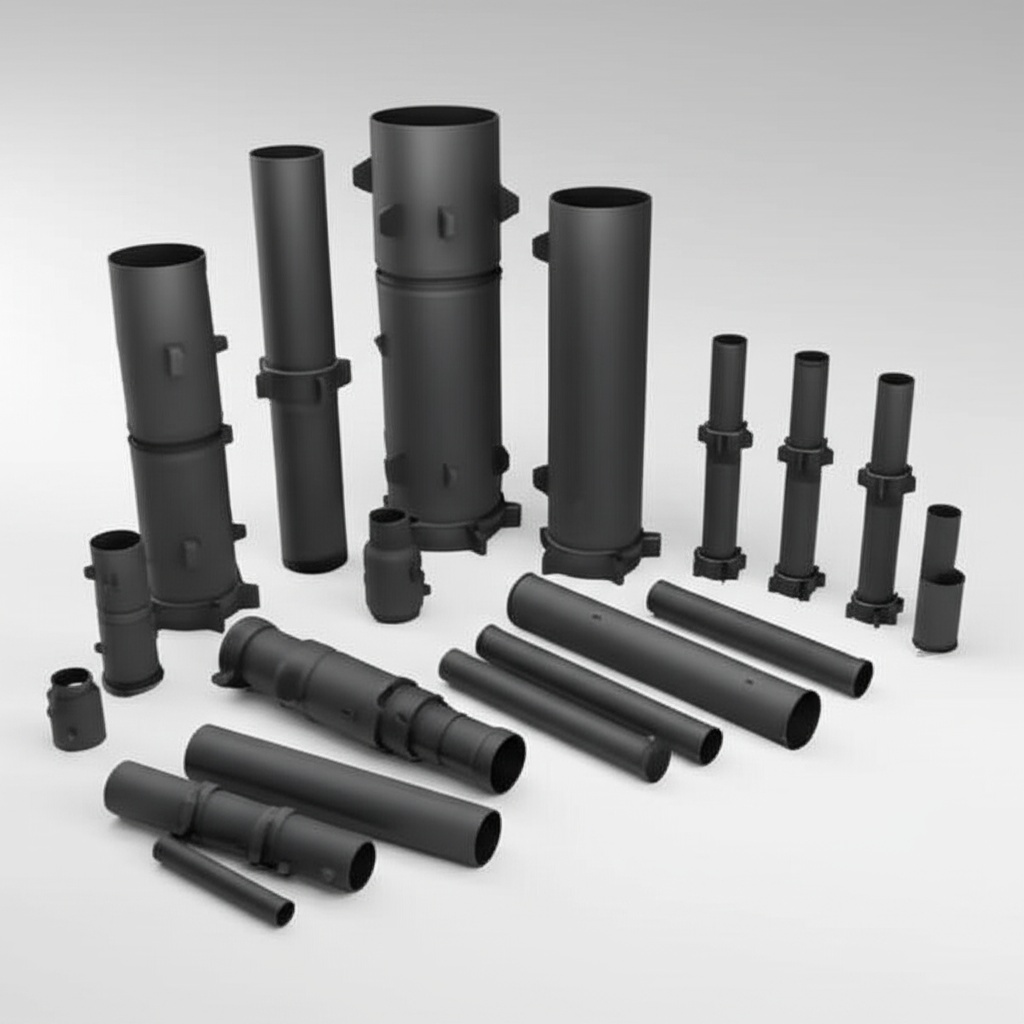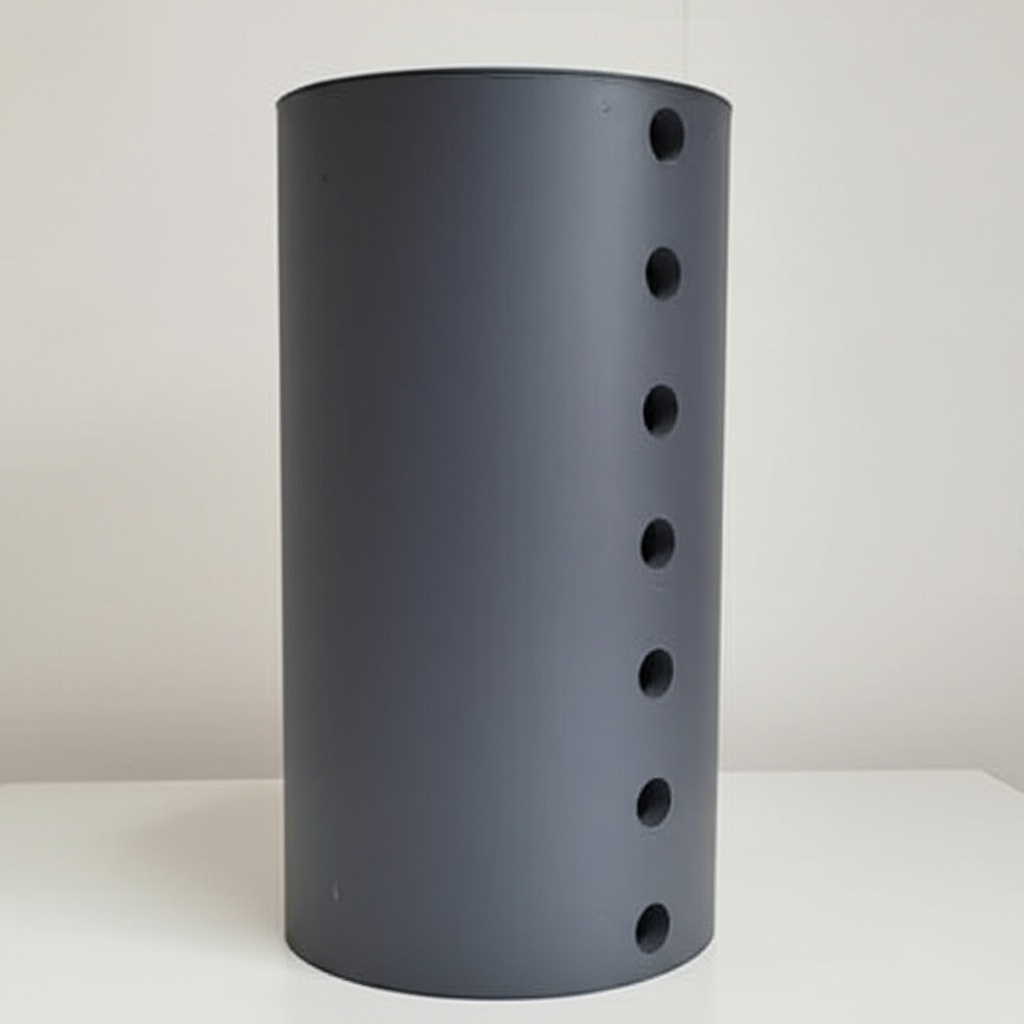SiC: Improving Metal Casting Quality & Precision

Share
SiC: Improving Metal Casting Quality & Precision
In the demanding world of metal casting, achieving superior quality, precision, and efficiency is paramount. Traditional materials often fall short when faced with extreme temperatures, abrasive molten metals, and the need for intricate designs. This is where custom silicon carbide (SiC) emerges as a transformative solution. Silicon carbide, an advanced technical ceramic, offers a unique combination of properties that make it indispensable for high-performance metal casting applications, driving innovation and operational excellence across various industries from automotive to aerospace.
The Critical Role of SiC in Modern Metal Casting Applications
Silicon carbide is not just another material; it’s a critical enabler in modern metal casting. Its exceptional characteristics allow for its use in direct contact with molten metals, leading to cleaner melts, reduced contamination, and longer-lasting components. The applications of SiC in metal casting are diverse and rapidly expanding:
- Foundry Operations: Used for thermocouple protection tubes, degassing rotors and shafts, crucibles, ladle liners, and pouring spouts. These components ensure accurate temperature measurement, efficient melt treatment, and controlled pouring.
- Aluminum and Non-Ferrous Casting: SiC’s non-wetting properties with molten aluminum and other non-ferrous alloys prevent dross formation and material buildup, leading to higher quality castings and easier maintenance. Key components include heater tubes, stalk tubes for low-pressure die casting (LPDC), and risers.
- Investment Casting: Silicon carbide shells and core materials are being explored for their ability to withstand high temperatures and produce castings with fine details and smooth surface finishes.
- Die Casting: SiC is utilized for components in die casting machines that require high wear resistance and thermal stability, such as shot sleeves, ladles, and protection tubes.
- Steel and Iron Casting: While more challenging due to higher temperatures and reactivity, specialized grades of SiC find applications in nozzles, runners, and slag-hole blocks where extreme erosion and thermal shock resistance are needed.
The adoption of SiC metal casting components is prevalent across numerous sectors, including:
- Automotive: Manufacturing engine blocks, cylinder heads, and powertrain components with greater precision.
- Aerospace: Producing turbine blades, structural components, and other critical parts requiring high strength-to-weight ratios and defect-free casting.
- Industrial Machinery: Creating complex and durable parts for pumps, valves, and heavy equipment.
- Energy Sector: Casting components for power generation turbines and renewable energy systems.
Sicarb Tech has witnessed firsthand the transformative impact of SiC in these demanding applications. Our extensive experience, showcased in various successful case studies, highlights our capability to deliver SiC solutions that meet the rigorous demands of modern metal casting.
Why Choose Custom Silicon Carbide for Your Casting Operations?
Opting for standard, off-the-shelf components might seem cost-effective initially, but the unique demands of metal casting often necessitate custom solutions. Custom silicon carbide parts offer significant advantages that translate into improved performance, longer service life, and ultimately, lower operational costs.
- Exceptional Thermal Conductivity & Stability: SiC maintains its strength and thermal conductivity at extremely high temperatures (up to 1650°C or higher for some grades). This ensures dimensional stability of casting components, uniform temperature distribution, and resistance to thermal shock during heating and cooling cycles.
- Superior Wear and Abrasion Resistance: Molten metals, especially those containing abrasive particles, can quickly degrade conventional materials. SiC’s extreme hardness (second only to diamond among common abrasives) provides outstanding resistance to wear, erosion, and abrasion, significantly extending the life of crucibles, nozzles, and thermocouple tubes.
- Chemical Inertness and Non-Wetting Properties: SiC exhibits excellent resistance to chemical attack from most molten metals, slags, and corrosive gases. Its non-wetting characteristics with many non-ferrous metals like aluminum and zinc prevent melt adhesion and dross buildup. This leads to cleaner castings, reduced contamination, and easier cleaning of SiC components.
- Design Flexibility for Complex Geometries: Advanced manufacturing techniques allow SiC to be formed into intricate shapes and complex geometries. This enables the production of custom-designed components tailored to specific casting processes, optimizing melt flow, temperature control, and overall casting efficiency.
- Improved Casting Quality: The combination of thermal stability, chemical inertness, and smooth surfaces achievable with SiC components contributes to castings with fewer defects, better metallurgical purity, finer grain structures, and improved surface finishes.
- Reduced Downtime and Maintenance: The longevity and durability of SiC parts mean fewer replacements, less frequent maintenance, and reduced operational downtime, leading to increased productivity.
By choosing custom SiC fabrication, metal casters can precisely match the material properties and component design to their specific application requirements, unlocking new levels of performance and efficiency. The ability to tailor solutions, such as those offered through Sicarb Tech’ customizing support, is crucial for optimizing your metal casting processes.
Recommended Silicon Carbide Grades for Metal Casting Components
Not all silicon carbide is created equal. Different manufacturing processes result in various SiC grades with distinct properties, making them suitable for specific metal casting applications. Understanding these grades is key to selecting the optimal material.
| SiC Grade | Key Characteristics | Common Metal Casting Applications | Considerations |
|---|---|---|---|
| Reaction-Bonded Silicon Carbide (RBSC / SiSiC) | Excellent wear resistance, high thermal conductivity, good thermal shock resistance, moderate strength, relatively easy to form complex shapes. Contains some free silicon. | Thermocouple protection tubes, nozzles, crucibles for non-ferrous metals, rollers, beams, burner nozzles, degassing rotors. | Not ideal for highly corrosive environments or applications where free silicon can be detrimental. Max service temperature typically around 1350°C – 1380°C. |
| Sintered Silicon Carbide (SSiC) | Extremely high purity, superior chemical resistance (acids and alkalis), excellent wear and corrosion resistance, high strength at elevated temperatures, good thermal shock resistance. No free silicon. | Crucibles for aggressive melts, pump components, seals, bearings, nozzles in highly corrosive environments, furnace linings. | More challenging and costly to machine into complex shapes compared to RBSC. Higher manufacturing cost. Max service temp up to 1650°C. |
| Nitride-Bonded Silicon Carbide (NBSC) | Good thermal shock resistance, good strength, good resistance to wetting by molten non-ferrous metals, good wear resistance. | Kiln furniture, furnace linings, thermocouple sheaths, crucibles for aluminum and zinc alloys. | Lower thermal conductivity compared to RBSC and SSiC. Properties can vary based on the nitride bonding phase. |
| Oxide-Bonded Silicon Carbide (OBSiC) | Lower cost, good thermal shock resistance, moderate strength. | Kiln furniture, setters, plates for lower temperature applications. | Lower refractoriness and chemical resistance compared to other grades. Generally not for direct contact with aggressive molten metals. |
| Recrystallized Silicon Carbide (RSiC) | High porosity (can be sealed), excellent thermal shock resistance, high working temperature. | Kiln furniture, high-temperature supports, radiant heater tubes. Often used where thermal cycling is severe. | Lower mechanical strength compared to dense SiC grades unless infiltrated or coated. |
| Clay-Bonded Silicon Carbide | Economical, good thermal shock resistance. | Crucibles for melting and holding non-ferrous metals, saggars, muffle rings. | Contains clay binder, which limits its performance at very high temperatures or in highly corrosive environments. |
Selecting the right grade involves a thorough analysis of the operating temperature, type of molten metal, presence of corrosive agents, mechanical stresses, and thermal cycling conditions. Partnering with an experienced SiC supplier who can provide material expertise is crucial for making the correct choice for your industrial ceramics solutions.
Designing Custom SiC Components for Optimal Casting Performance
The design of silicon carbide components for metal casting is a critical step that significantly impacts their performance, lifespan, and manufacturability. While SiC offers exceptional properties, its inherent brittleness and machining challenges require careful design considerations.
- Simplicity and Manufacturability:
- Aim for simple geometries where possible. Complex features can increase manufacturing costs and create stress concentration points.
- Avoid sharp internal corners; use generous radii (e.g., >3mm if feasible) to reduce stress and improve strength.
- Minimize abrupt changes in cross-sectional thickness to prevent thermal stress during firing and operation.
- Wall Thickness:
- Ensure sufficient wall thickness to withstand mechanical loads and thermal stresses. Minimum wall thickness depends on the SiC grade and the overall size of the part. For instance, RBSC components might typically require a minimum of 3-5mm, but this can vary.
- Uniform wall thickness promotes even heating and cooling, reducing the risk of thermal shock cracking.
- Tolerances and Draft Angles:
- Specify realistic tolerances. While tight tolerances are achievable with post-machining, they significantly increase costs. “As-fired” tolerances are more economical.
- Incorporate draft angles (typically 1-3 degrees) for designs involving molding or casting processes to facilitate demolding.
- Joining and Assembly:
- If large or complex structures are needed, consider designing modular components that can be assembled. This can be more cost-effective than manufacturing a single, monolithic piece.
- Discuss joining methods (e.g., SiC brazing, mechanical fastening) with your supplier early in the design phase.
- Stress Points and Load Conditions:
- Identify areas of high mechanical or thermal stress and design accordingly. This might involve reinforcing specific areas or modifying the geometry to distribute stress more evenly.
- Consider the operational loads, including static, dynamic, and impact forces, as well as thermal gradients.
- Flow Dynamics (for components in contact with molten metal):
- For components like pouring spouts, nozzles, or degassing rotors, the internal geometry should be designed to optimize flow, minimize turbulence, and prevent clogging or erosion.
- Smooth internal surfaces are generally preferred.
- Thermal Management:
- Account for SiC’s thermal expansion. While lower than metals, it’s not negligible, especially in large components or assemblies with other materials.
- Design features that accommodate thermal cycling without inducing excessive stress.
Collaborating closely with your custom SiC components supplier during the design phase is essential. Experienced suppliers can provide valuable insights into design for manufacturability (DFM), helping to optimize the component for both performance and cost-effectiveness. They can also advise on the limitations and capabilities of different SiC grades and manufacturing processes.
Achieving Precision: Tolerance, Surface Finish & Dimensional Accuracy in SiC Casting Components
In metal casting, the precision of components like thermocouple sheaths, crucibles, and nozzles directly impacts process control and final product quality. Silicon carbide components can be manufactured to high levels of dimensional accuracy and specific surface finishes, but these parameters are influenced by the SiC grade, manufacturing method, and post-processing steps.
Dimensional Tolerances:
- As-Fired Tolerances: These are the tolerances achieved directly after the sintering or reaction-bonding process without any subsequent machining. Typical as-fired tolerances for RBSC parts might be around ±0.5% to ±1.5% of the dimension, or a minimum of ±0.5mm, whichever is greater. SSiC parts might have slightly tighter as-fired tolerances due to more controlled shrinkage. These are the most cost-effective tolerances.
- Machined Tolerances: For applications requiring higher precision, SiC components can be ground, lapped, or polished using diamond tooling. Machined tolerances can be significantly tighter, often in the range of ±0.01mm to ±0.05mm, or even better for critical features. However, machining SiC is a slow and expensive process due to its extreme hardness.
Surface Finish:
- As-Fired Surface: The surface finish of as-fired SiC components depends on the manufacturing process and mold materials. It’s generally suitable for many metal casting applications. RBSC might have a surface roughness (Ra) of around 1-5 µm.
- Ground Surface: Grinding can improve the surface finish significantly, typically achieving Ra values between 0.4 µm and 0.8 µm. This is often required for parts needing better sealing surfaces or smoother contact with molten metal.
- Lapped/Polished Surface: For applications demanding extremely smooth surfaces (e.g., seals, bearings, some specialized casting interfaces), lapping and polishing can achieve Ra values below 0.1 µm. This results in mirror-like finishes.
The non-wetting characteristics of SiC with molten aluminum, for example, are enhanced by a smoother surface finish, reducing dross adhesion and improving the lifespan of components like heater tubes and stalk tubes.
Factors Influencing Precision:
- SiC Grade: Different grades have varying shrinkage rates and machining characteristics.
- Manufacturing Process: Pressing, slip casting, extrusion, and additive manufacturing each have different inherent precision levels.
- Part Complexity and Size: Larger and more complex parts are generally harder to control dimensionally.
- Tooling Quality: Precision molds and tooling are essential for accurate as-fired parts.
It’s crucial for procurement managers and engineers to clearly define the required tolerances and surface finishes in their specifications, understanding the cost implications. Over-specifying can lead to unnecessary expenses. Discussing these requirements with a knowledgeable SiC supplier will ensure that the components meet functional needs without excessive cost.
Essential Post-Processing for Enhanced SiC Performance in Casting
While the intrinsic properties of silicon carbide are impressive, post-processing treatments can further enhance its performance, durability, and suitability for specific metal casting environments. These treatments are designed to refine dimensions, improve surface characteristics, or add protective layers.
- Grinding and Machining:
- Purpose: To achieve tight dimensional tolerances, precise geometries, and improved surface finishes that cannot be met by as-fired parts.
- Process: Utilizes diamond grinding wheels and tools due to SiC’s extreme hardness. Processes include cylindrical grinding, surface grinding, and CNC machining for complex contours.
- Benefit in Casting: Ensures accurate fit of components (e.g., thermocouple sheaths in holders), provides smooth surfaces for better metal flow in nozzles, and creates sealing surfaces.
- Lapping and Polishing:
- Purpose: To achieve ultra-smooth, mirror-like surface finishes and extremely tight flatness or parallelism.
- Process: Involves using progressively finer diamond abrasives on a lapping plate.
- Benefit in Casting: Reduces friction, improves wear resistance in dynamic applications (e.g., SiC bearings in pumps handling molten metal), and can enhance non-wetting properties by minimizing surface area for adhesion.
- Sealing and Impregnation:
- Purpose: To reduce or eliminate porosity, especially in grades like Recrystallized SiC (RSiC) or some porous Reaction Bonded SiC.
- Process: Porous SiC can be impregnated with silicon, resins, or ceramic materials that fill the pores upon firing or curing.
- Benefit in Casting: Improves resistance to penetration by molten metals or corrosive gases, enhances strength, and increases impermeability. Sealed RSiC heater tubes are an example.
- Coatings (e.g., Boron Nitride, Alumina):
- Purpose: To further enhance specific surface properties like non-wetting, chemical resistance, or oxidation resistance.
- Process: Applied via spraying, dipping, or chemical vapor deposition (CVD).
- Benefit in Casting: Boron Nitride coatings are commonly applied to SiC components (e.g., crucibles, thermocouple tubes) used with molten aluminum to improve metal release and prevent dross buildup. Alumina coatings can enhance resistance to certain chemical attacks.
- Edge Chamfering/Radiusing:
- Purpose: To remove sharp edges which can be points of stress concentration and prone to chipping in brittle materials like SiC.
- Process: Light grinding or specialized tooling.
- Benefit in Casting: Improves handling safety and enhances the mechanical integrity of the component, reducing the likelihood of chipping during installation or operation.
- Cleaning and Passivation:
- Purpose: To remove any contaminants from manufacturing or machining and to prepare the surface for optimal performance.
- Process: May involve ultrasonic cleaning, acid etching (for certain grades), or heat treatment.
- Benefit in Casting: Ensures a clean surface for contact with molten metal, preventing contamination of the melt.
The necessity and type of post-processing depend heavily on the specific application, the SiC grade chosen, and the performance requirements. Discussing these needs with your technical ceramics supplier is crucial for optimizing the component’s functionality and cost-effectiveness.
Overcoming Common Challenges in Using SiC for Metal Casting
Despite its numerous advantages, working with silicon carbide in metal casting presents certain challenges. Understanding these potential issues and knowing how to mitigate them is key to successfully implementing SiC components.
- Brittleness and Susceptibility to Mechanical Shock:
- Challenge: SiC is a brittle ceramic. It has high compressive strength but lower tensile and impact strength compared to metals. Accidental impacts or excessive mechanical loads can lead to fracture.
- Mitigation Strategies:
- Proper design: Incorporate generous radii, avoid sharp corners, and ensure adequate wall thickness.
- Careful handling and installation procedures. Train personnel on handling ceramic parts.
- Use of protective mountings or enclosures where impact risk is high.
- Select tougher SiC grades (e.g., some specially formulated RBSiC or NBSC) if impact is a concern, though this might trade off other properties.
- Thermal Shock Sensitivity (in some grades or conditions):
- Challenge: While many SiC grades have excellent thermal shock resistance, rapid and extreme temperature changes can still cause cracking, especially in larger or complex shapes or less shock-resistant grades.
- Mitigation Strategies:
- Select grades with high thermal conductivity and low thermal expansion (e.g., RBSC, SSiC).
- Implement controlled heating and cooling rates in the casting process.
- Design components to minimize thermal gradients. Uniform wall thickness helps.
- For extreme thermal cycling, consider RSiC if its porosity and strength are acceptable, or consult on specialized SSiC grades.
- Machining Complexity and Cost:
- Challenge: SiC’s extreme hardness makes it difficult and time-consuming to machine, requiring diamond tooling and specialized equipment. This adds to the cost of components requiring tight tolerances or complex machined features.
- Mitigation Strategies:
- Design for “as-fired” condition whenever possible. Minimize features that require post-machining.
- Specify realistic tolerances. Avoid over-tolerancing.
- Work with suppliers who have advanced machining capabilities and experience with SiC.
- Consider near-net-shape manufacturing processes to reduce machining allowances.
- Initial Investment Cost:
- Challenge: Custom SiC components generally have a higher upfront cost compared to traditional refractory materials or metals.
- Mitigation Strategies:
- Focus on Total Cost of Ownership (TCO). The longer service life, reduced downtime, and improved casting quality offered by SiC often result in lower overall costs over time.
- Optimize component design for material efficiency.
- Work with suppliers who can offer competitive pricing through efficient manufacturing and material sourcing.
- Consider pilot programs to quantify the benefits before large-scale adoption.
- Joining SiC to Other Materials:
- Challenge: Differences in thermal expansion coefficients and the non-ductile nature of SiC can make joining it to metals or other ceramics complex.
- Mitigation Strategies:
- Utilize specialized joining techniques like active metal brazing, diffusion bonding, or mechanical clamping systems designed for ceramics.
- Design joints to accommodate thermal expansion mismatches (e.g., using compliant interlayers or flexible attachments).
- Consult with experts in ceramic-to-metal joining.
- Oxidation at Very High Temperatures in Air:
- Challenge: While SiC forms a protective silica (SiO2) layer, prolonged exposure to very high temperatures (e.g., >1600-1700°C) in oxidizing atmospheres can lead to passive or active oxidation, potentially degrading the material.
- Mitigation Strategies:
- Select appropriate SiC grades (e.g., high-purity SSiC is more resistant).
- Consider protective coatings or controlled atmospheres for extreme temperature applications.
- Ensure the operational temperature limits for the chosen grade are respected.
By anticipating these challenges and working with experienced silicon carbide manufacturers, users can effectively leverage the remarkable properties of SiC in their metal casting operations, leading to significant improvements in productivity and product quality.
Choosing Your Silicon Carbide Partner: The Weifang Advantage with Sicarb Tech
Selecting the right supplier for your custom silicon carbide components is as crucial as choosing the right material grade. A knowledgeable and capable partner can significantly impact the success of your metal casting operations. When evaluating potential suppliers, consider their technical expertise, material quality, customization capabilities, quality certifications, and supply chain reliability.
In this context, it’s important to recognize a significant global hub for SiC innovation and production. The hub of China’s silicon carbide customizable parts manufacturing is situated in Weifang City of China. This region is home to over 40 silicon carbide production enterprises of various sizes, collectively accounting for more than 80% of the nation’s total SiC output. This concentration of expertise and manufacturing capacity offers unique advantages to buyers seeking high-quality, cost-effective SiC solutions.
At the forefront of this development is Sicarb Tech. We are not just another supplier; we are deeply integrated into the fabric of Weifang’s SiC industry. Since 2015, Sicarb Tech has been instrumental in introducing and implementing advanced silicon carbide production technology, assisting local enterprises in achieving large-scale production and significant technological advancements in product processes. We have been a witness to, and a catalyst for, the emergence and ongoing development of this vibrant local SiC industry cluster. You can learn more about us and our journey.

About the Author: Sicarb Tech
We provide clear and reliable insights into silicon carbide materials, component manufacturing, application technologies, and global market trends. Our content reflects industry expertise, practical experience, and a commitment to helping readers understand the evolving SiC landscape.




